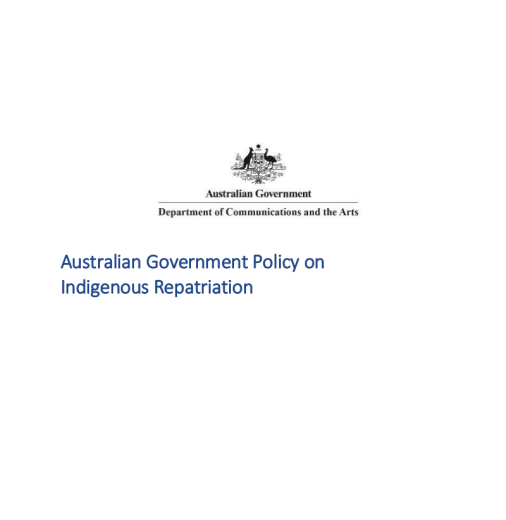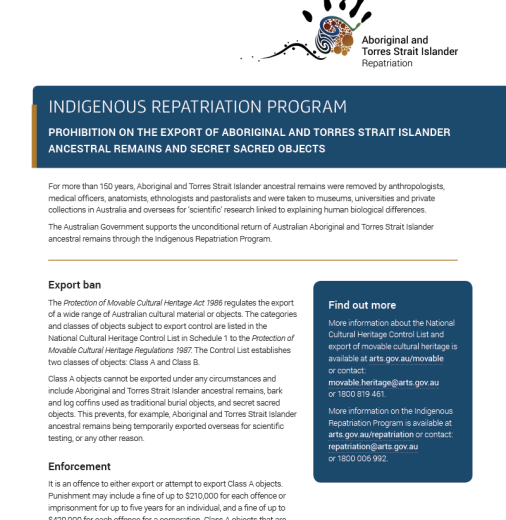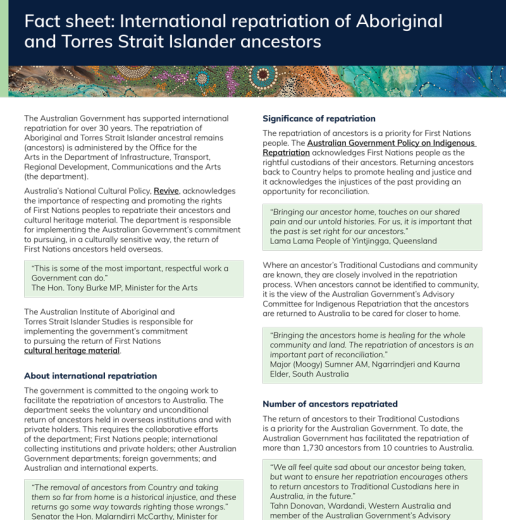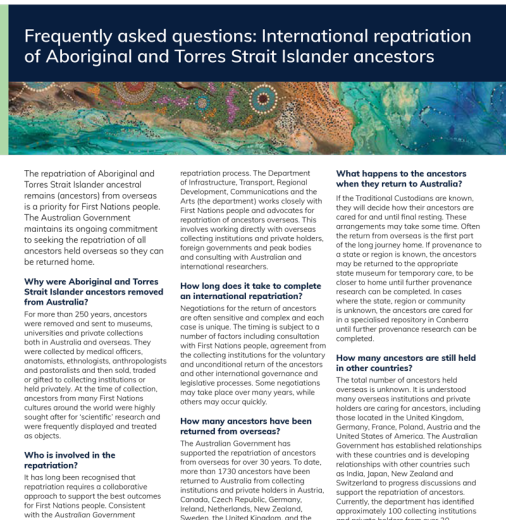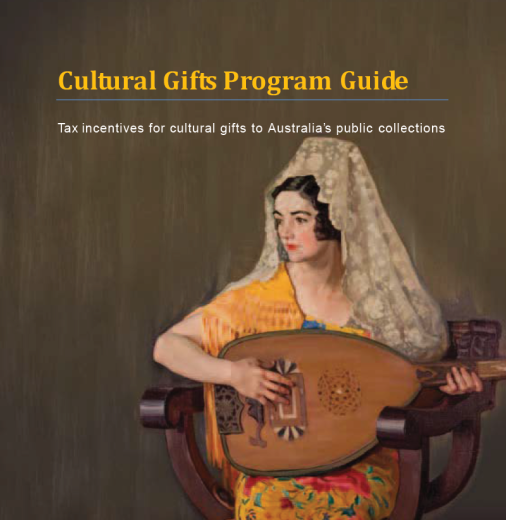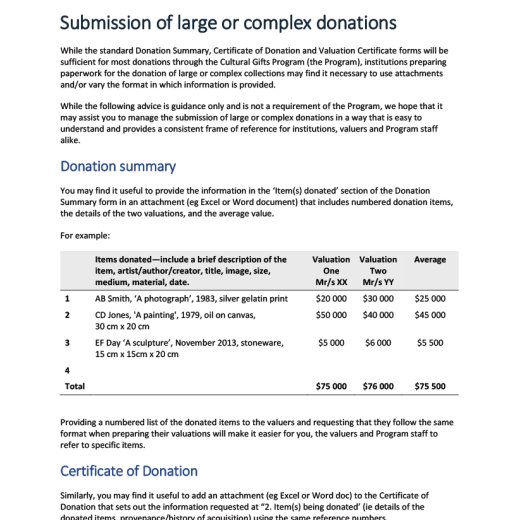Indigenous Repatriation
The Australian Government supports the repatriation of Aboriginal and Torres Strait Islander ancestral remains (ancestors) and secret sacred objects (objects) which contributes to healing and reconciliation.

We facilitate the voluntary and unconditional return of ancestors held in overseas collections and with private holders; and support the safe return of ancestors and objects held in eight major Australian museums to their Traditional Custodians, contributing to healing and reconciliation.
For more than 250 years ancestors and objects were removed from their communities and placed in museums, universities and private collections in Australia and overseas. During the 19th and 20th centuries, medical officers, anatomists, ethnologists, anthropologists, and pastoralists collected ancestors for 'scientific' research linked to explaining human biological differences. While others removed ancestors and objects for the purpose of trade or sale where they were frequently placed on display and exhibited as curiosities in collecting institutions.
It has long been recognised that repatriation requires a collaborative approach to support the best outcomes for First Nations people. We work with all stakeholders, including Aboriginal and Torres Strait Islander communities, other Australian Government agencies, Australian museums, state, territory and local governments, researchers and overseas governments, collecting institutions and private holders.
Australian Government Policy on Indigenous Repatriation
The Australian Government Policy on Indigenous Repatriation was established in 2011. In 2016, it was updated to reflect the change in Department name.
Australian Government Indigenous Repatriation Policy—September 2016
Other Australian Government Repatriation Programs
The Australian Institute of Aboriginal and Torres Strait Islander Studies (AIATSIS)
In July 2020, the Australian Government announced four- year funding for AIATSIS to implement the Return of Cultural Heritage Initiative (the Initiative). The Initiative seeks to return Aboriginal and Torres Strait Islander cultural heritage material from overseas collecting institutions, governments and private holders back to their Traditional Custodians. To find out more about the Initiative, visit the AIATSIS website.
Department of Veterans' Affairs
The Department of Veterans' Affairs is responsible for the policy on the repatriation of Australian soldiers buried overseas. To find out more, visit the Department of Veterans Affairs website.
Contact
Email: repatriation@arts.gov.au. Phone: 1800 006 992
Documents


